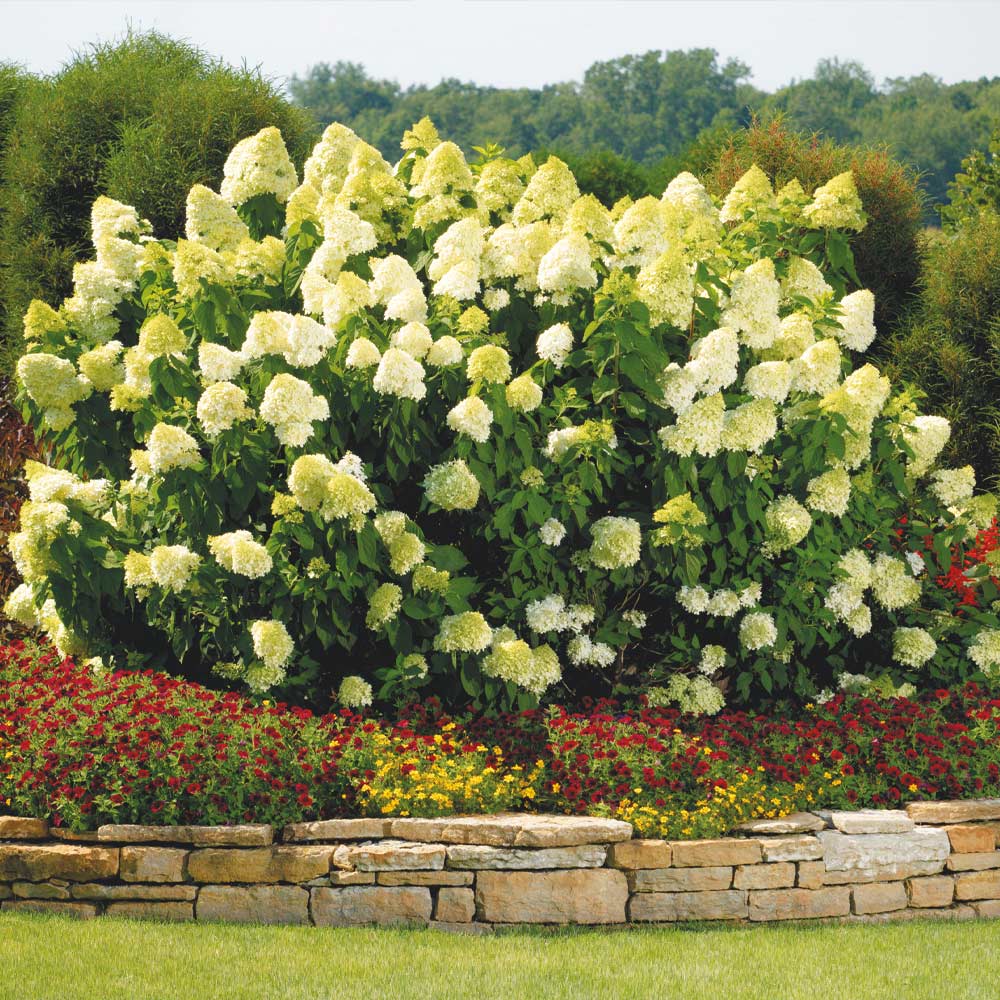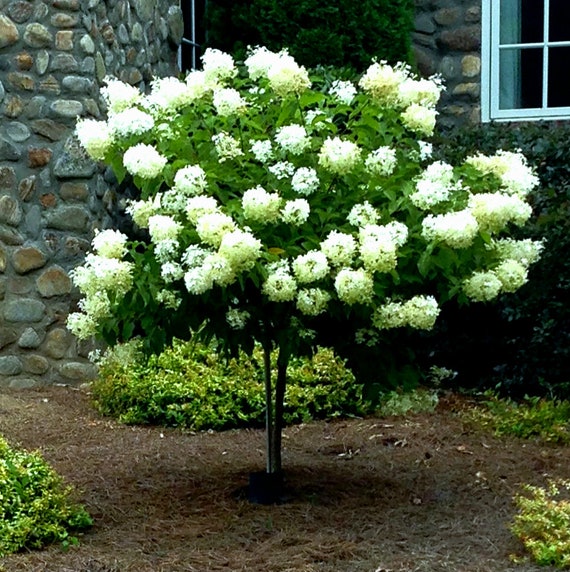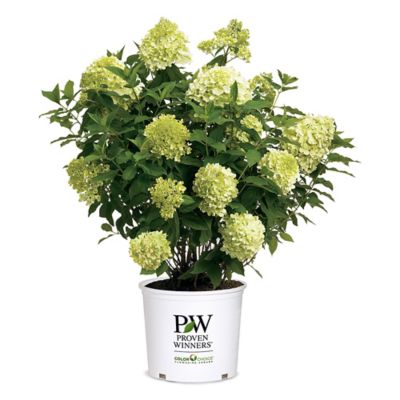Limelight Hydrangea Shrubs: The Showstopper Of Your Garden
Limelight Hydrangea Shrubs: The Showstopper of Your Garden
Limelight hydrangeas are a popular choice for gardeners because of their stunning blooms and low-maintenance care. These shrubs can grow up to eight feet tall and wide, and their flowers are a beautiful pale green color that matures to white or pink. Limelight hydrangeas are hardy in zones 3-8, so they can be grown in most parts of the country.
In this blog post, we will discuss the following:
- The history of limelight hydrangeas
- The different types of limelight hydrangeas
- How to plant and care for limelight hydrangeas
- Common problems with limelight hydrangeas
- How to propagate limelight hydrangeas
History of Limelight Hydrangeas
Limelight hydrangeas were first introduced in the Netherlands in the early 1990s. They were created by plant breeder Peter Zwijnenburg, who crossed four different varieties of hydrangeas to create a plant with the best possible qualities. Limelight hydrangeas quickly became popular, and they are now one of the most popular hydrangea varieties in the world.
Types of Limelight Hydrangeas
There are two main types of limelight hydrangeas:
- Hydrangea paniculata 'Limelight': This is the original variety of limelight hydrangea. It has pale green flowers that mature to white or pink.
- Hydrangea paniculata 'Little Lime': This is a dwarf variety of limelight hydrangea. It only grows to be about three feet tall and wide. It has the same pale green flowers as the original variety.
How to Plant and Care for Limelight Hydrangeas
Limelight hydrangeas are relatively easy to care for. They prefer full sun or partial shade, and they need well-drained soil. They are drought-tolerant once established, but they will benefit from regular watering during the summer months.
To plant a limelight hydrangea, dig a hole that is twice as wide as the root ball. Add some compost or manure to the soil, and then plant the shrub. Water the shrub well, and mulch around the base to help retain moisture.
Limelight hydrangeas do not need to be pruned heavily. However, you can remove dead or damaged branches in the spring. You can also prune the shrubs to keep them in shape.
Common Problems with Limelight Hydrangeas
The most common problem with limelight hydrangeas is chlorosis. Chlorosis is a condition that causes the leaves to turn yellow. It is caused by a lack of iron in the soil. To correct chlorosis, you can add iron chelate to the soil.
Another common problem with limelight hydrangeas is powdery mildew. Powdery mildew is a fungal disease that causes white spots to form on the leaves. To control powdery mildew, you can use a fungicide.
How to Propagate Limelight Hydrangeas
Limelight hydrangeas can be propagated by taking cuttings in the spring or summer. To take a cutting, cut a 6-inch piece of stem from a healthy plant. Remove the bottom leaves, and then dip the cutting in rooting hormone. Plant the cutting in a pot of well-drained soil. Keep the soil moist, and the cutting should root in about six weeks.
Conclusion
Limelight hydrangeas are a beautiful and low-maintenance addition to any garden. They are hardy in most parts of the country, and they can be grown in full sun or partial shade. Limelight hydrangeas are not particularly fussy about soil, but they do appreciate well-drained soil. They are drought-tolerant once established, but they will benefit from regular watering during the summer months.
If you are looking for a showstopping shrub for your garden, limelight hydrangeas are a great option. They are sure to add a touch of beauty and elegance to your landscape.
The limelight hydrangea shrub is a beautiful and easy-to-care-for plant that is perfect for adding a touch of color to your garden. With its large, cone-shaped blooms that start out white and gradually turn pink to red as the summer progresses, the limelight hydrangea is sure to be a showstopper.
If you're interested in learning more about this amazing plant, I suggest you visit . This website has a wealth of information about the limelight hydrangea, including its care requirements, planting instructions, and troubleshooting tips.
In addition to providing detailed information about the limelight hydrangea, also features beautiful photos of this stunning plant. These photos will give you a better idea of what to expect when you add a limelight hydrangea to your garden.
So what are you waiting for? Visit today and learn more about this amazing plant!
FAQ of limelight hydrangea shrub
Q: What is a limelight hydrangea shrub?
A limelight hydrangea shrub is a type of panicle hydrangea that is known for its large, white flowers. The flowers start out as a soft pink and then gradually fade to white as they mature. Limelight hydrangeas are a popular choice for gardens because they are relatively easy to care for and they can tolerate a wide range of conditions.
Q: What are the best conditions for growing a limelight hydrangea shrub?
Limelight hydrangeas prefer full sun in cold climates, but they can tolerate afternoon shade in warmer climates. They also need well-drained soil that is not too acidic. If the soil is too acidic, the flowers will be a paler pink or even blue.
Q: How do I care for a limelight hydrangea shrub?
Limelight hydrangeas are relatively easy to care for. They need to be watered regularly, especially during the summer months. They should also be fertilized once a year in the spring. In the fall, the leaves will turn yellow and fall off. The shrub should be pruned in the early spring, before the new growth starts.
Q: What are some common problems with limelight hydrangea shrubs?
The most common problem with limelight hydrangea shrubs is powdery mildew. This is a fungal disease that can cause the leaves to develop a white, powdery coating. Powdery mildew can be treated with a fungicide.
Another common problem is aphids. Aphids are small, sucking insects that can damage the leaves and flowers of limelight hydrangeas. Aphids can be controlled with insecticidal soap or neem oil.
Q: How long do limelight hydrangea shrubs live?
Limelight hydrangea shrubs can live for many years, if they are properly cared for. They can reach a height of 6 to 8 feet and a width of 4 to 6 feet.
Image of limelight hydrangea shrub
5 different images of "limelight hydrangea shrub" from Pinterest:
- Image 1: A full-grown limelight hydrangea shrub in full bloom. The flowers are a beautiful shade of pink, and they are arranged in large, cascading clusters.

- Image 2: A close-up of the flowers of a limelight hydrangea shrub. The flowers are very delicate, with a lacy appearance.
- Image 3: A limelight hydrangea shrub in the fall. The leaves of the shrub have turned a beautiful shade of red, and the flowers are still in bloom.

- Image 4: A limelight hydrangea shrub in a garden setting. The shrub is surrounded by other flowers, and it is a focal point of the garden.

- Image 5: A limelight hydrangea shrub in a pot. The shrub is a great addition to a patio or deck, and it can be brought indoors during the winter.


Post a Comment for "Limelight Hydrangea Shrubs: The Showstopper Of Your Garden"